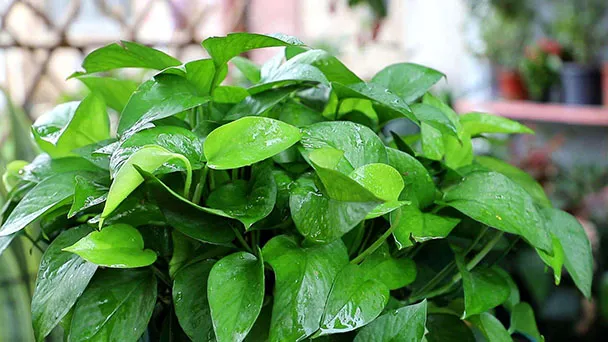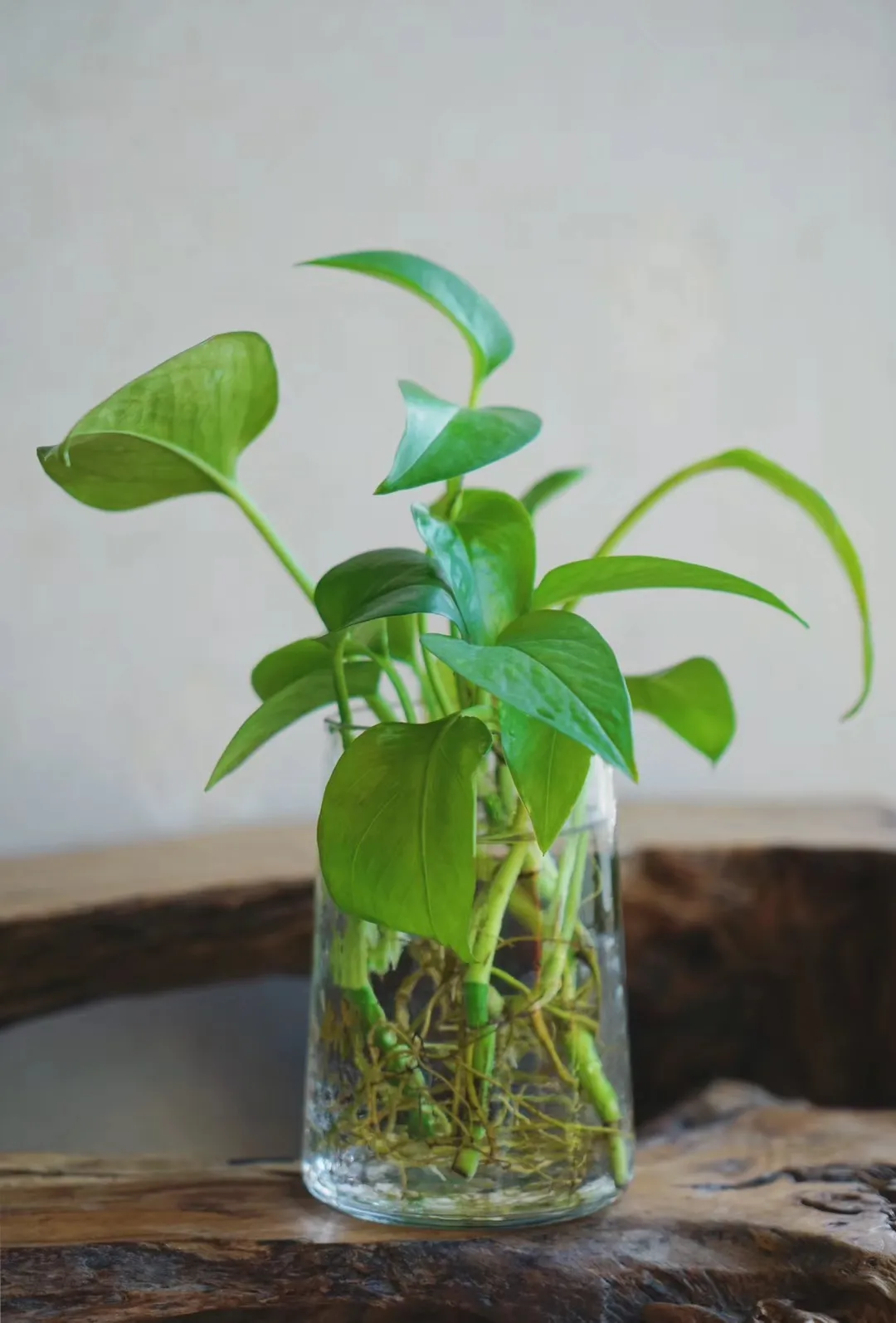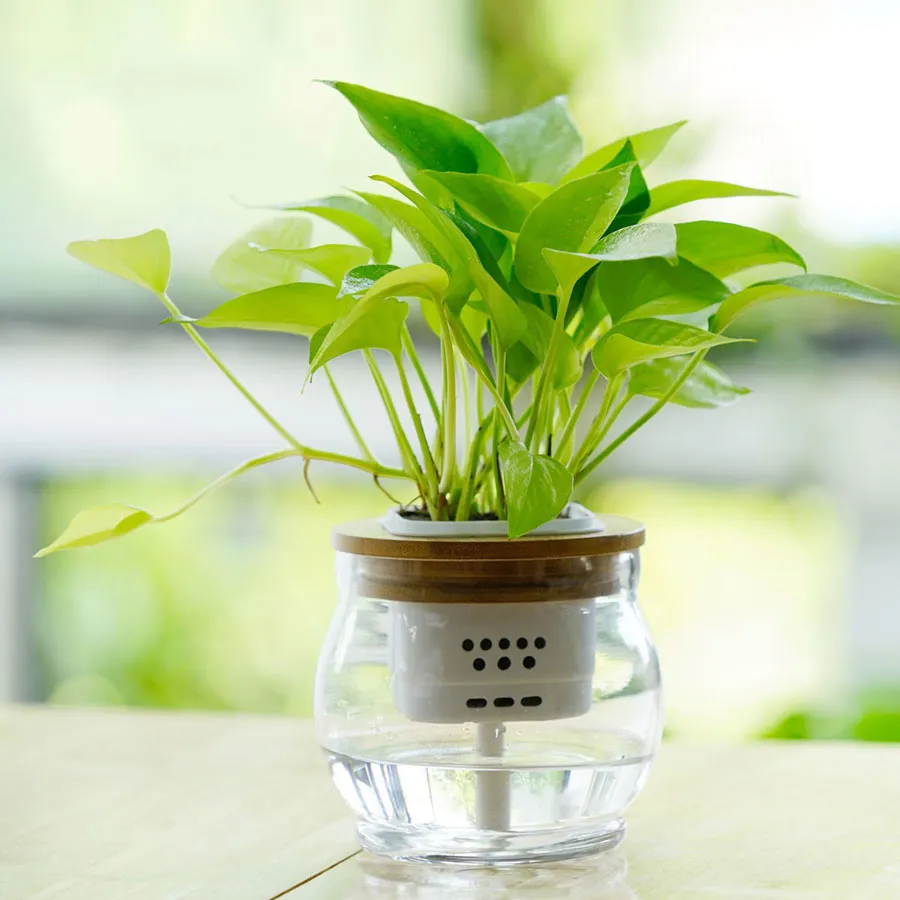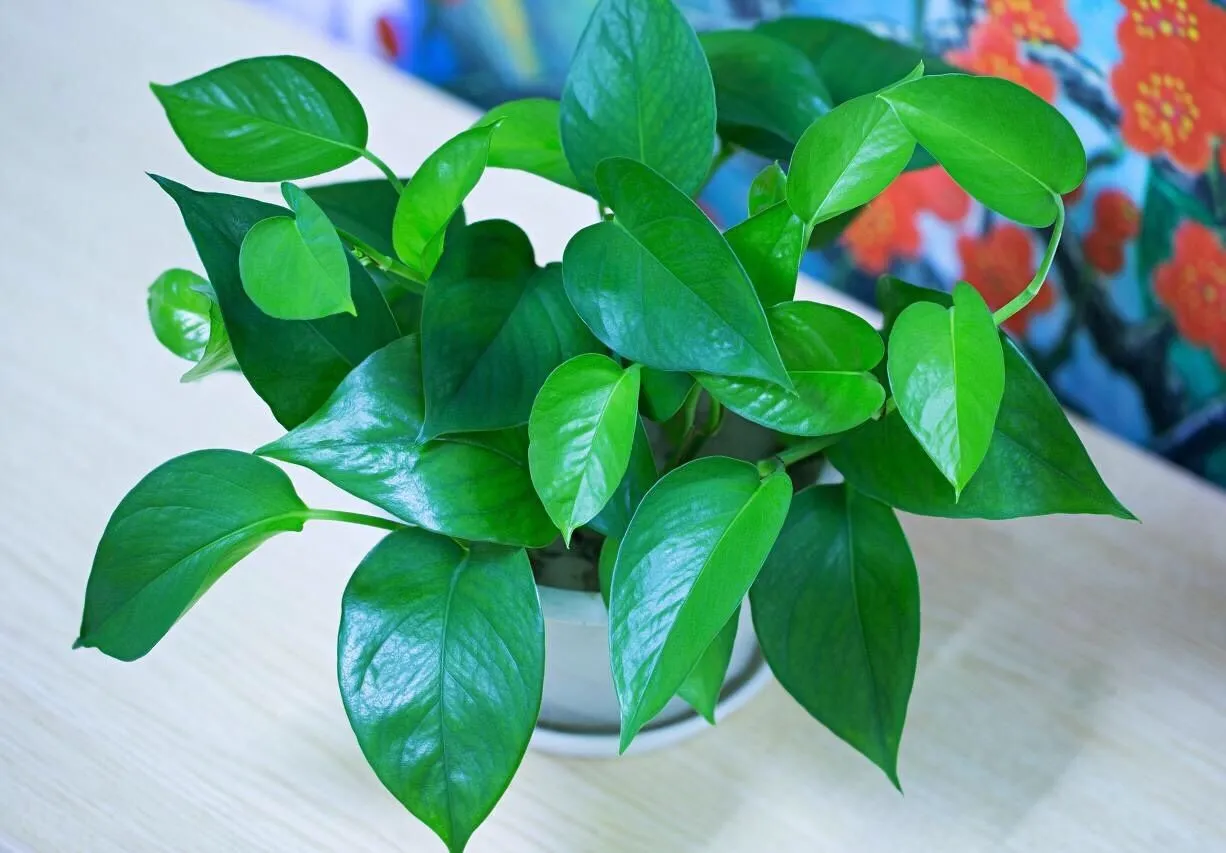How To Fix Overwatered Pothos
Written by Ivy
Jan 20 2023

In general, it is not easy to die if Pothos is overwatered, because its vitality is very strong and it is not so easy to die. However, Pothos will have some bad growth performance, such as yellow leaves, drooping leaves and so on. However, if excessive watering is carried out for a long time and the water accumulates in the basin soil for a long time, Pothos's roots will slowly rot and may die over time.



In the process of removing soil and pruning roots, do not make branches scattered. We can disperse the whole Overwatered Pothos plant cluster. If the branches are scattered, the original soil is retained too little, and wilting will occur after being put into the pot, with yellow leaves and some even rotten stems.
In summer, you need to water every 1-2 days. Because the temperature is relatively high in summer and the air is relatively dry, the water is very easy to evaporate. In this season, it is necessary to pour more water on the plant to ensure that the Overwatered plant will not be short of water.
In autumn, you need to water every 4-5 days. Because the temperature has begun to decrease in autumn and there is no heating, the temperature is relatively low at this time, so the evaporation of water will not be fast. At this time, it is not necessary to pour too much water on Pothos. It can be poured once every 4-5 days.
In winter, we can water Pothos every 3-4 days. Pay attention to water when watering. Don't pour too cold water, otherwise the plant may be frostbitten.
Fermented rice washing water, fish culture water, vinegar water, vitamin C water and soybean water are better for watering water, which can promote its growth faster and more vigorous. Water likes a slightly acidic soil environment. These kinds of water can keep it acidic and supplement nutrients for growth. It should be noted that water should not be watered too often and should not be replaced by water. Otherwise, water cannot be absorbed and growth will be hindered. Generally, Overwatered Pothos should be watered once a month or two.
The most important thing to maintain Pothos is to raise roots. Organic pure plant nutrient solution with rich and balanced nitrogen, phosphorus and potassium content promotes the growth of Pothos, with strong plants, green leaves and developed roots. If the indoor temperature is not lower than 10 ℃, dilute it with nutrient solution and water for half a month and pour a small amount of Pothos.
Some people only wet the surface of pot soil when watering Pothos, and give some water as soon as the pot soil becomes dry. Although it is often watered, in fact, the water does not penetrate into the pot soil, and the root system does not absorb water. We must water Pothos thoroughly at one time. It is easy to breed bacteria if it is neither dry nor wet.
Read More:
How To Define Your Pothos Underwatered Or Overwatered?Judge with a StickLook at the Basin Soil SurfaceLook at the Blade StateCommon Signs of Overwatered PothosRoot RotBrown Spots on Pothos LeavesMold Growing on SoilPothos Leaves WrinkledPothos Leaves Curling & WiltingHow to Save Overwatered PothosAssess the Extent of DamageDrain Excess WaterWithdraw Water for Several Days to WeeksDig and Overturn the SoilTrim Off Damaged Leaves & Rotten RootsRepot Your plant Overwatered PothosHow to Water Pothos ProperlyWatering from Below or TopWatering FrequencyWater QualityAmount of WaterCommon Mistakes in Watering Pothos
How To Define Your Pothos Underwatered Or Overwatered?

Judge with a Stick
We can insert the stick into the soil and take it out after a few minutes. If the stick doesn't get wet and doesn't bring the soil out, it means Pothos is short of water and should be watered in time. You can also twist the planting soil. If it turns into powder after twisting, it means Pothos is in a state of water shortage; If it is granular after twisting, it means that the soil is still very wet and can not be watered first.Look at the Basin Soil Surface
Check the dry and wet condition of Pothos basin soil surface. If the soil on the surface has become dry, turn over the deep soil with your hand. If only the surface is dry, it means there is no water shortage. If the deep soil layer also starts to dry, it means that it is very short of water and needs to be replenished as soon as possible. Tap the flowerpot with a wooden stick or hand. If the sound is dull, it proves that there is water. If the sound is very crisp, it means that the water in Pothos basin has evaporated, and water supply is required as soon as possible.Look at the Blade State
If Pothos's leaves are not firm and wilting, it is lack of water; If the leaves grow well, green and straight, it means that the soil in the flowerpot has water, so you don't need to water first. We can also weigh the weight of the flowerpot. If it is very light, we should supply water.Common Signs of Overwatered Pothos

Root Rot
If we water Pothos too much, the plant can not absorb it, which will cause ponding in the basin soil. Its roots will be soaked in the ponding, and the roots will be unable to breathe normally due to hypoxia, and the roots will rot over time. Therefore, during daily watering, the amount of water should be controlled, and there must be no ponding in the basin soil. In addition, during the rainy season, pay attention not to let Pothos be drenched by rain, because the long-term accumulation of rain in the basin will also lead to rotten roots.Brown Spots on Pothos Leaves
There are brown spots on Pothos's leaves, which may be affected by leaf spot disease. The main reason is that it has been overwatered for a long time. Overwatered Pothos will be infected if it is in a closed and unventilated environment for a long time, coupled with relatively humid air humidity. At the beginning, there will be a small number of brown spots on the leaves. With the gradual progress of the disease, they will become black spots at home.Mold Growing on Soil
The moldy soil of Pothos is also because we watered too much. It is best to replace it with new basin soil in time, which can effectively solve the moldy soil. We can clean the soil at the root of Pothos and disinfect it with carbendazim solution, and then we can plant it in pots again.Pothos Leaves Wrinkled
If we water Pothos too much at night, Pothos may wilt, soften and lie down with or without heating. If there is no heating, it is very easy to hurt the roots when the temperature is too low at night, and Pothos leaves will wilt due to low temperature and insufficient water supply. If there is heating, the temperature is relatively high at night, and the soil water content is large, the roots will suffocate due to hypoxia, affecting the supply of water and nutrients, resulting in Pothos wilting and softening. When Pothos wilts and softens overnight due to excessive watering, ventilation is the first time to drain the water in the basin soil as quickly as possible. If you can take off the basin, you can take off the Pothos basin and air it in a cool and ventilated place, so that the water volatilizes faster.Pothos Leaves Curling & Wilting
Most of the time, we all think Pothos likes a humid and warm growth environment, so it is usually watered more. The basin soil used by Pothos is mostly the soil configured with coconut bran, peat and perlite, which has strong water retention. Once watered frequently, the basin soil is difficult to dry quickly, so it will cause ponding and root stuffing, and the root system will be stuffy and rotten over time, As a result, the water and nutrient supply of Pothos will be affected, and the newly grown leaves will appear curling and wilting. (Read More: Why Are My Pothos Leaves Curling)
How to Save Overwatered Pothos
Assess the Extent of Damage
We evaluated whether Pothos was watered too much and observed the leaves and roots of Pothos. The yellow leaves and rotten roots of overwatered pothos are mostly caused by improper watering. If the watering is less, Pothos can't get enough water, and yellow leaves will wilt. Therefore, watering should be thorough at ordinary times, but there should be no ponding. Another reason is excessive light. If the light is too strong and goes directly to the leaves of Pothos, you will get sunburn and yellow.Drain Excess Water
Ponding in Overwatered Pothos potted pots is mainly caused by excessive watering at ordinary times. The excessive temperature of water in the pot should be stored in the pot soil. When the pot soil ponding, we can use the soil loosening tool to insert around the pot, gently shake the pot soil to loosen the pot soil, which is conducive to the drainage of ponding in the pot, reduce the harm of accumulated water to Pothos roots and reduce the symptoms of root rot.Withdraw Water for Several Days to Weeks
We should stop watering 3-5 days before changing Pothos basin, because the basin soil is too wet, which is not conducive to Pothos basin changing operation.Dig and Overturn the Soil
Potted Pothos often grows rapidly, so the demand for nutrient elements is relatively large and the requirements are relatively high. When dig and overturn the soil, we can use fertile and loose soil or peat soil.Trim Off Damaged Leaves & Rotten Roots
When we change pots for Overwatered Pothos, we should completely pour out the whole soil ball, and then trim off some of the long-growing and dense roots. It is best to trim off half of the roots under the pot soil, otherwise there is no place for the new pot soil, and all the space is occupied by these roots. About 1 / 3 of the soil is also cut off at the periphery of the soil ball, but the soil near the base of the branch is best preserved so that it can adapt to the new soil faster in the later stage.In the process of removing soil and pruning roots, do not make branches scattered. We can disperse the whole Overwatered Pothos plant cluster. If the branches are scattered, the original soil is retained too little, and wilting will occur after being put into the pot, with yellow leaves and some even rotten stems.
Repot Your plant Overwatered Pothos
When changing pots for overwatered Pothos, we'd better prepare a flowerpot with a larger and deeper mouth, which will stretch its roots and tie deeper, and the naturally absorbed nutrients will be faster, which is conducive to the growth of Pothos. After putting into the pot, we can put Pothos in a cool and ventilated place to make it more suitable for the environment. However, it cannot accept light at this stage. After adapting for about 1 week, we can move to an area that can accept scattered light. Under photosynthesis, Pothos will return to its previous state and grow faster.- Also Read: How and When to Repot Your Pothos
How to Water Pothos Properly

Watering from Below or Top
- From Top
- From Below
- Use Both
Watering Frequency
The frequency of watering Pothos varies according to time. Specifically, water can be poured every 2-3 days in spring. It still has a large demand for water in spring, so it is watered more often, which can meet the water demand of Pothos growth.In summer, you need to water every 1-2 days. Because the temperature is relatively high in summer and the air is relatively dry, the water is very easy to evaporate. In this season, it is necessary to pour more water on the plant to ensure that the Overwatered plant will not be short of water.
In autumn, you need to water every 4-5 days. Because the temperature has begun to decrease in autumn and there is no heating, the temperature is relatively low at this time, so the evaporation of water will not be fast. At this time, it is not necessary to pour too much water on Pothos. It can be poured once every 4-5 days.
In winter, we can water Pothos every 3-4 days. Pay attention to water when watering. Don't pour too cold water, otherwise the plant may be frostbitten.
Water Quality
For convenience, we can use the connected tap water, but we can't use it directly. After it is connected, we can put it in the container for static precipitation for a few days, which can volatilize the chlorine inside and make the temperature tend to room temperature, which is more favorable for the growth of Pothos. (Read More: How to Choose The Best Pot For a Pothos Plant)Fermented rice washing water, fish culture water, vinegar water, vitamin C water and soybean water are better for watering water, which can promote its growth faster and more vigorous. Water likes a slightly acidic soil environment. These kinds of water can keep it acidic and supplement nutrients for growth. It should be noted that water should not be watered too often and should not be replaced by water. Otherwise, water cannot be absorbed and growth will be hindered. Generally, Overwatered Pothos should be watered once a month or two.
Amount of Water
For potted overwatered plants, the amount of water watered during the growth period is better if the basin soil is wet and not dry. In summer, it is necessary to appropriately increase the number of watering and often spray water on Pothos leaves to maintain sufficient air humidity. In winter, watering should be appropriately reduced to avoid freezing and waterlogging. We should pay attention to the water temperature when watering Pothos. Too low water temperature will cause Pothos to freeze.Common Mistakes in Watering Pothos
Some people are used to pouring tea into Pothos pots, which is a big mistake. Tea contains theophylline, caffeine and other alkaloids, which can not only destroy the organic components in Pothos basin soil, but also reduce the fertility of the basin soil.The most important thing to maintain Pothos is to raise roots. Organic pure plant nutrient solution with rich and balanced nitrogen, phosphorus and potassium content promotes the growth of Pothos, with strong plants, green leaves and developed roots. If the indoor temperature is not lower than 10 ℃, dilute it with nutrient solution and water for half a month and pour a small amount of Pothos.
Some people only wet the surface of pot soil when watering Pothos, and give some water as soon as the pot soil becomes dry. Although it is often watered, in fact, the water does not penetrate into the pot soil, and the root system does not absorb water. We must water Pothos thoroughly at one time. It is easy to breed bacteria if it is neither dry nor wet.
Read More:
- Why Are My Pothos Leaves Turning Yellow
- Pothos Root Rot - Cause And Treatment
- Snow Queen Pothos VS Marble Queen Pothos
- How To Grow And Care For Manjula Pothos
- Hawaiian Pothos VS Golden Pothos
- Epipremnum Aureum (Golden Pothos) Grow and Care
- How to Grow and Care for Scindapsus Pictus
- Cebu Blue Pothos Care & Propagation
- Glacier Pothos Care & Propagation Guide
- Silver Satin Pothos Care & Propagation
- Pearls and Jade Pothos Care & Propagation
- Neon Pothos Plant Care Guide
Latest Updated
- Benefits of Bugleweed - 7 Science-backed Health Benefits
- Bugleweed Dangers & Side Effects - Is It Poisonous?
- How to Plant Evergreen Trees - What You Should Know
- When to Plant Evergreens - Grow Guide for Evergreen Trees
- 12 Wonderful Evergreen Shrubs for Your Garden
- 12 Popular Evergreen Plants with Pictures for Beginners
- When And How To Prune A Lilac Bush Like a Pro
- How to Grow & Care for Lilac Vine (Hardenbergia Violacea)
- Japanese Lilac Tree (Syringa Reticulata) Care & Propagation Guide
- Shumard Oak Pros and Cons - What to Know
Popular Articles
- Winter maintenance of Antirrhinum Majus
- How to Grow Terminalia Mantaly Tree
- How to Grow and Care for Crossostephium Chinense
- How to grow Antirrhinum Majus in spring
- Peristeria Elata (Dove Orchid) Profile: Info & Care Guide
- Underwatered Snake Plant (Sansevieria Trifasciata) - Signs And How To Fix
- How to Care for Brazilian Jasmine Plant (Mandevilla Sanderi)
- How to Grow & Care for Graptopetalum Purple Delight in Summer
- Rosa Chinensis (China Rose): Plant Growing & Care Tips
- How to Care for Baby Sun Rose (Aptenia Cordifolia)